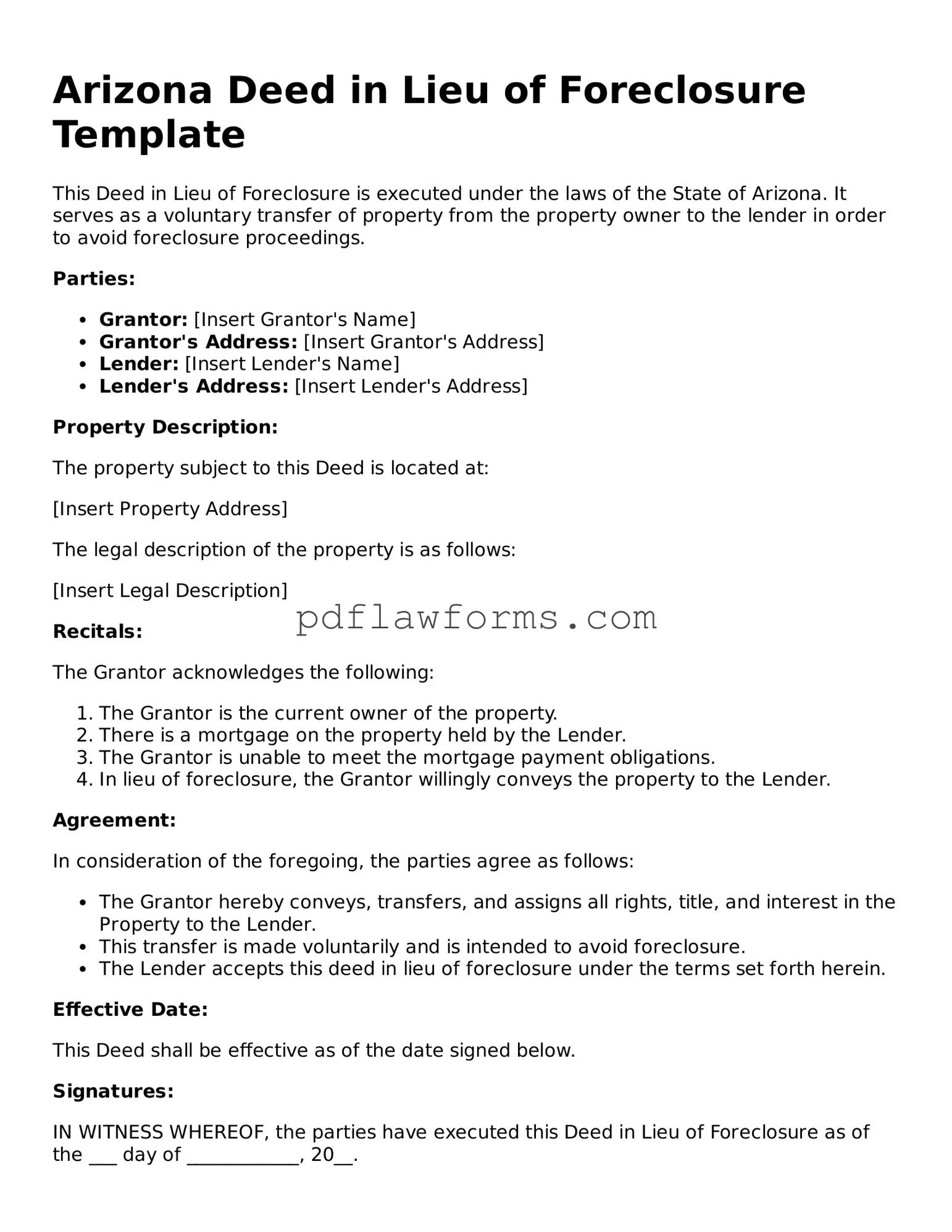Deed in Lieu of Foreclosure Form for the State of Arizona
A Deed in Lieu of Foreclosure is a legal document that allows a homeowner to voluntarily transfer their property to the lender in order to avoid the lengthy and often stressful foreclosure process. This option can provide a more amicable resolution for both parties, allowing the homeowner to walk away from the mortgage without the negative impacts of foreclosure on their credit. If you are considering this option, you can begin the process by filling out the necessary form; click the button below to get started.
Make My Document Online
